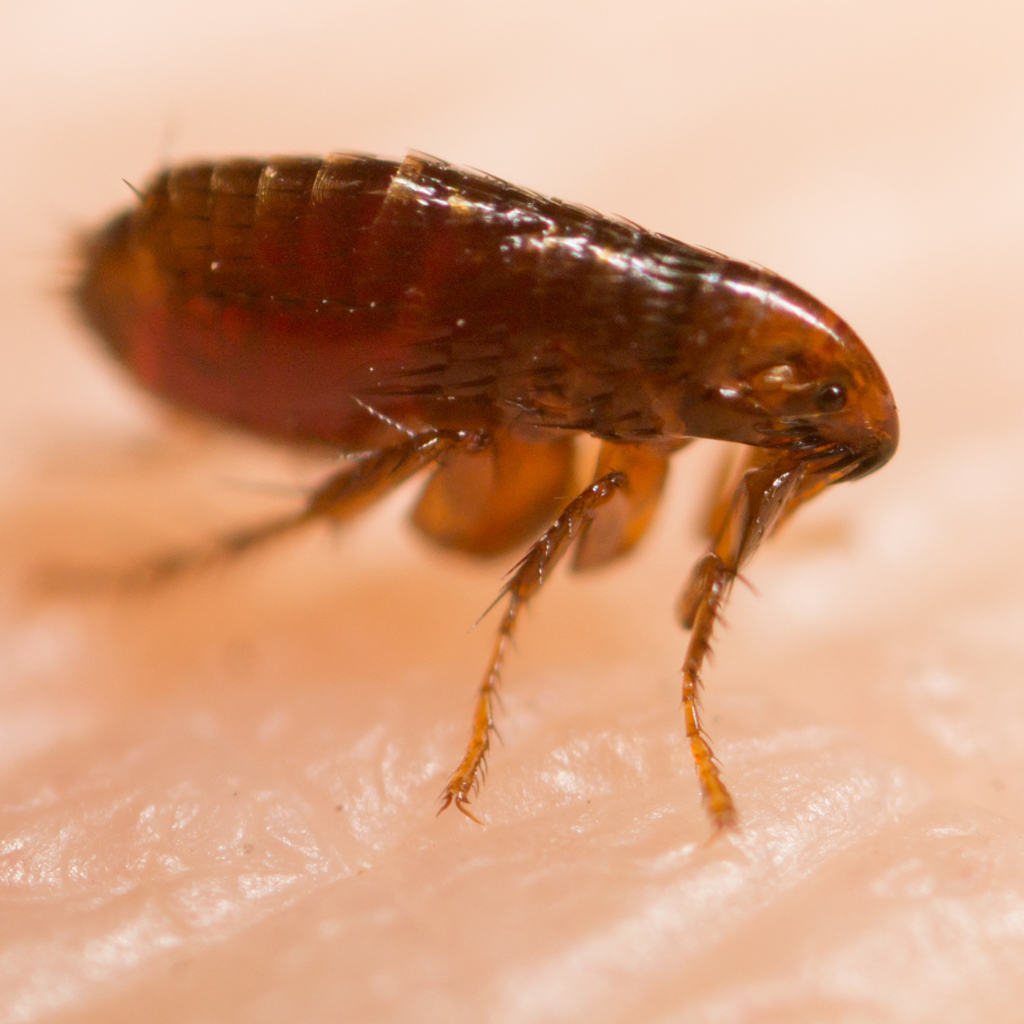


Fleas are an especially irritating pest in the Coachella Valley. If your pet is constantly scratching and you can see fleas crawling in their fur, or notice itchy reddish bumps on your skin, it’s important to get in touch with professional flea exterminators right away. Rudy’s Termite & Pest Control offers effective and thorough flea extermination in the Coachella Valley.
Fleas are often confused with lice and bed bugs. The most common types of flea found in the Coachella Valley are the dog flea and the cat flea. They’re usually 1/8 of an inch long, with flattened, dark brown bodies – though after eating they will appear larger and reddish in color. They have six legs, have no wings, and have piercing mouthparts. Fleas are visible to the naked eye. Fleas are wingless but can jump several inches.
Fleas are parasitic and feed on the blood of animals and humans. They can live in tall grass and hide in the hair or fur of animals. Fleas typically get into your home via pets, and can sometimes enter your home seeking shelter from prolonged rainy conditions. In Southern California, drought conditions also force fleas to go in search of reliable sources of food and water. High humidity and heat are perfect for flea breeding.
Flea droppings look like ground black pepper, and seeing signs of this may mean you have a flea infestation in your home.
Fleas lay eggs after a blood meal, which is a necessary component to reproduce. Flea eggs can be seen in clusters of approximately 20 eggs that resemble grains of sand. A flea can take two days to two weeks to hatch from its egg, with humidity and heat speeding up the process. In the larval stage, fleas eat what is known as “flea dirt,” pre-digested blood passed on from adult fleas. Flea larvae are about ¼ inch in length, translucent, and legless. The larval stage can last approximately 5-20 days.
In the pupal stage, fleas develop in a cocoon for up to several weeks. However, fleas can remain in this cocoon for months or even years, awaiting the ideal environmental conditions to emerge. A flea’s cocoon is very resilient and can remain even after vacuuming or sweeping.
Because adult fleas need to feed very soon after emerging from its cocoon, it will not come out unless a potential host is nearby. Then, after a blood meal, fleas will begin to breed, and the process can start again almost right away.
Fleas can lay approximately 40 eggs a day, so they can become a serious problem very quickly. Fleas lay eggs in places like on pets, carpets, human and pet bedding, and furniture. Even if adult fleas are dealt with, their eggs can remain.
Rudy’s Termite & Pest Control are licensed Coachella Valley flea control experts. Contact us today and let us solve the issue effectively.
Fleas are a major problem for pets. Not only can they transmit worms to them (and to people too), but an untreated flea infestation on a pet can be life-threatening. Humans aren’t immune to flea issues, either. If there is no animal host nearby, a flea will jump to the closest person it can find. Some examples of diseases carried by fleas are cat scratch fever, feline anemia, and allergies.
If you notice itchy pink bumps clustered together in small bumps, you may have a flea infestation.
Fleas are a major problem for pets and humans alike. They can carry disease-causing pathogens, aggravate allergies, and even pass on tapeworms. Call Rudy’s Termite & Pest Control today for effective treatment of fleas in your home or business.